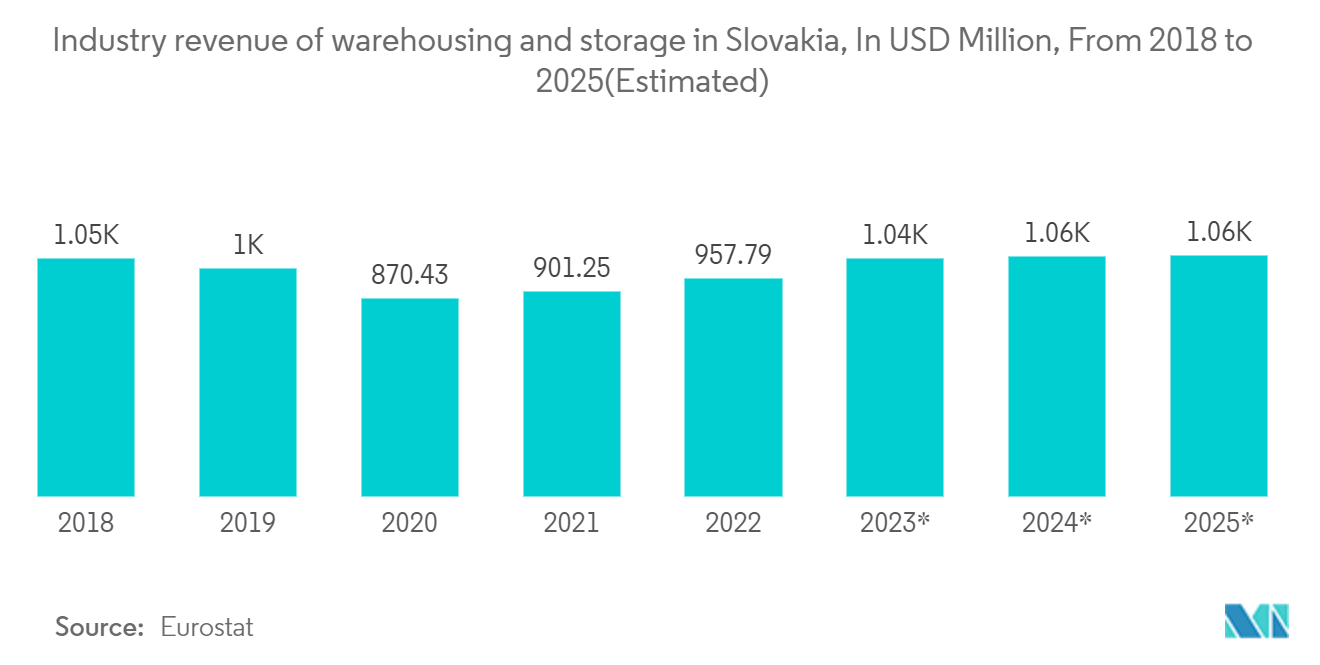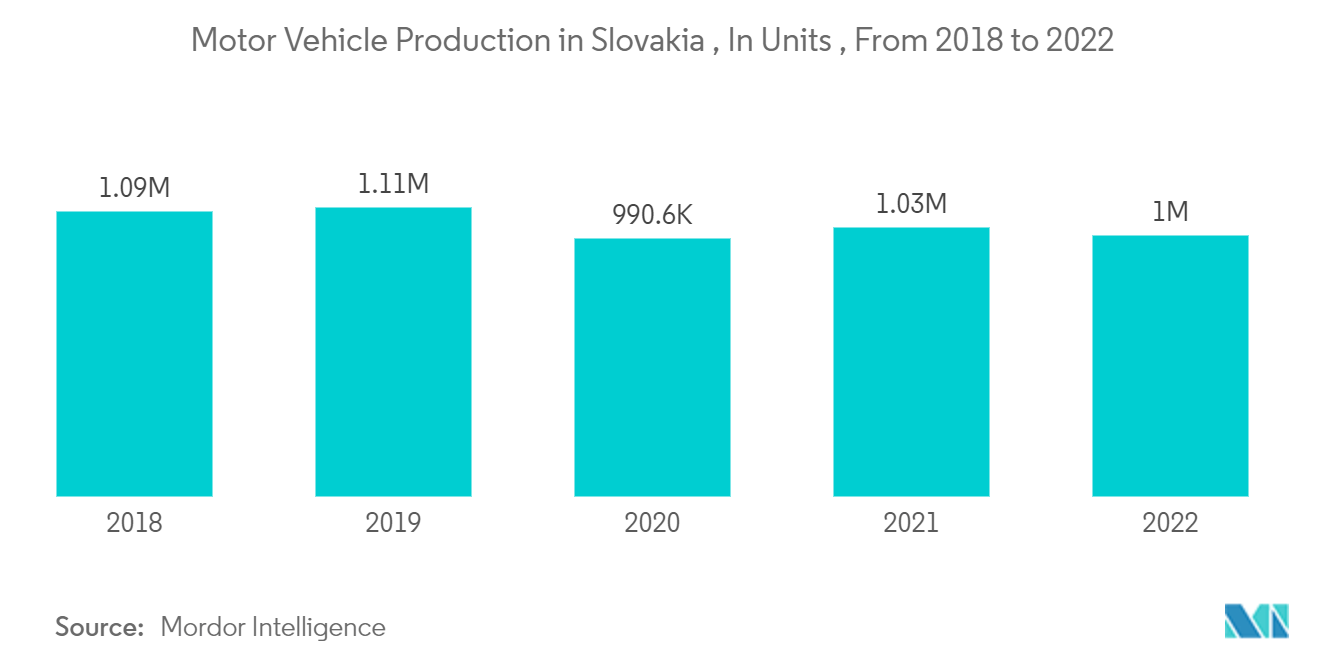Market Trends of Slovakia Freight And Logistics Industry
Warehousing Growth in Slovakia
Logistics operators and automotive producers remain the main drivers of demand for warehousing spaces in Slovakia. The country is witnessing increased demand from current players who are looking for expansion and new companies looking for new premises.
Owing to the increasing demand for logistics facilities in the country, Slovakia is also going to open a major warehouse park "Mountpark" which will be designed to serve as a major logistics centre and warehouse accommodation that will benefit from the skilled and educated labour force. It will be located close to major manufacturing facilities, Bratislava International Airport, and the city centre, and will establish easy connections to the Czech Republic, Hungary, and Austria.
There are 2,262 Warehousing & Storage in Slovakia businesses as of 2023, an increase of 10.5% from 2022.

Increasing Demand for Logistics Services from Automotive Industry
Slovakia's automotive industry is very integral to its logistics industry. Companies like Volkswagen and Audi have plants in Bratislava, PSA Peugeot Citroen has plants in Trnava, Kia Motors is based in Zilina. Volkswagen, PSA, Kia, and Jaguar Land Rover (JLR) together with their tier one and tier two suppliers generate nearly 44% of the country's total industrial production and 40% of its exports, worth USD 29.1 billion per year.
The automotive industry accounted for 47.7 per cent of the sales of the entire Slovak industry and almost 43 per cent of the country's total exports. There are more than 350 automotive suppliers in Slovakia accounting for the vast majority (89%) of direct jobs across the industry.
Slovakia Motor Vehicle Production was reported at 1,000,000.000 Unit in Dec 2022. This records a decrease from the previous number of 1,030,000.000 Unit for Dec 2021. Slovakia Motor Vehicle Production data is updated yearly, averaging 573,423.500 Unit from Dec 1997 to 2022, with 26 observations.
In Slovakia's finished vehicle logistics industry, one of the most important trends is a shift from trucks to rail which is intended to reduce emissions. Logistics providers are taking advantage of government investment in infrastructure and using rail to cut emissions. Nearly half of the wagons from Slovakia are transported by rail either to final destinations or ports. Since Slovakia is a land-locked country, manufactured vehicles are transported by trains and trucks.


